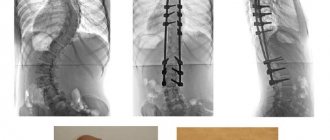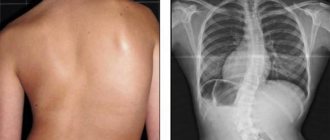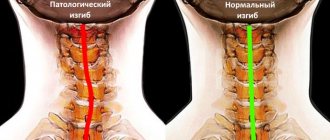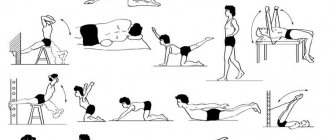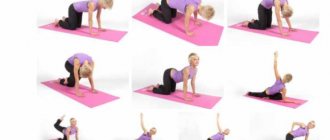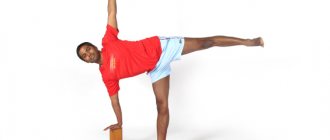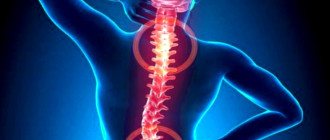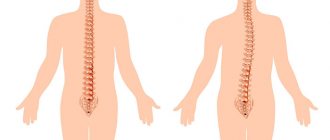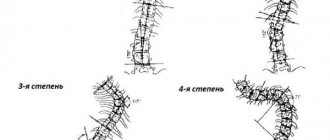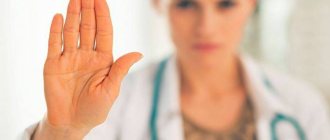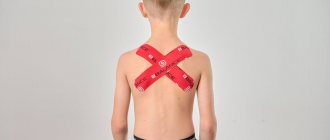Author: Kiselev Alexey
- Part 1 (working on shoulder joint flexibility)
- 1. Theory
- 1.1.Definition and history
- 1.2.Classification and etiology of scoliosis
- 1.3.Pathogenesis (cause of appearance) Work of the muscles supporting the spine
- Pathogenesis of scoliosis with etiology trauma
- The reason for the formation of wedge-shaped vertebrae
- Cause of vertebral rotation
- Torsion
- Development of scoliosis
- Impact on internal organs
- Impact of abnormal movement patterns on scoliosis
- Progression depending on age
- Surgery
- 2.1.Inspection
What is scoliosis?
If we describe scoliosis in simple words, then we can fit into one simple definition: scoliosis is a lateral curvature of the spine.
Like many other diseases of the musculoskeletal system, scoliosis has an unpleasant tendency: it can progress.
Therefore, there are 4 degrees of deformation :
| 1st degree | implies a minor deformation, in which the angle of curvature is 5-10 degrees; |
| 2nd degree | diagnosed with curvature of the spine at an angle of 11 to 25 degrees; |
| 3rd degree | reaches 26-50 degrees in curvature deformation; |
| 4th degree | is extreme and entails changes in the entire human skeleton. The deformation angle exceeds 50 degrees. |
Depending on which direction the deformation is directed (left or right), it is advisable to talk about such types of scoliosis as right-sided and left-sided scoliosis.
In addition to the severity of the disease and the side of the curvature, the shape of the deformity should also be determined. From this point of view, scoliosis is divided into C-shaped (the curvature has only one arc), S-shaped (the curvature has two arcs), and Z-shaped (the curvature has three or more arcs).
2.1. Inspection
- Books
- Kornilov N.V. "Orthopedics. A short guide for practicing physicians." St. Petersburg, “HIPOCRATES” 2001, pp. 32-47
- Yoga therapy course lectures
- Lectures by Sergei Agapkin at a yoga therapy course on the topic “Yoga therapy and diseases of the musculoskeletal system,” Moscow, October 29-30, 2011.
- Lectures by Artyom Frolov at the yoga therapy course, Moscow October 09-11, 2012
- Lectures by Artyom Frolov on a course of 12 lessons “yoga therapy ODA”, Scoliosis, Moscow December 10, 2012
- Anatomy
- Kapandzhi A.I. Spine, Physiology of Joints, Volume 3
- Internet resources
- healthy-back.livejournal.com
Like
data-text=”Yoga therapy for S-shaped scoliosis.
Website of the Kiselyovs Alexey and Tatyana" data-via=»nirvakar» data-lang=»ru» data-count=»horizontal»>Tweet VKontakte
The benefits of yoga for the body as a whole
Yoga came to us from ancient Indian culture, which understood something about the spiritual and physical development of man. Therefore, yoga will be useful for many diseases, not only physical, but also mental.
The benefits of yoga for the musculoskeletal system of the body
Our body, like any complex system that includes many subsystems and branches from them, can give signals for help if something is wrong with it, but often we do not understand them because we do not see the connection between “what hurts” ” and “what is actually happening.”
This is why many cannot recover from an annoying illness, because they drink endless pills and other medicines by the handful in the hope that “what hurts” will go away.
Yoga is especially useful for people with musculoskeletal problems
Yoga is attractive in this case because it has a wide variety of so-called schools, each of which has its own specialization, aimed at correcting various deficiencies and problems in the body (develops flexibility, endurance, strengthens the immune system, relieves stress, improves blood circulation, etc.) .
Yoga is especially effective for diseases of the musculoskeletal system . She preaches three main principles: non-violence, mindfulness and moderation. Therefore, before you start this or that exercise, you need to listen carefully to your body: the load should bring relaxation, there should be no discomfort and that unfortunate pain that haunts your joints every day.
Yoga is suitable for people of all ages ; the main thing is to do this magical exercise correctly and regularly. If you start treatment with this technique, you will soon notice positive changes: blood circulation will improve (along with it, joint mobility will improve), the muscles of the back and neck will become stronger, cartilage tissue will become stronger (this will prevent the development of osteochondrosis and arthrosis), mental state will be restored , mood swings and nervous breakdowns will stop.
Important! Despite its rarity, there are still cases when yoga is not suitable as a therapeutic and restorative physical activity. Such cases are especially common among overweight people and people with asthma. Therefore, if you feel discomfort after a certain number of yoga sessions, you have unpleasant symptoms or the general condition of your body has worsened, you should think about another method of strengthening your body and spirit.
Yoga for scoliosis
Scoliosis is one of the most common diseases of the musculoskeletal system, so more and more people these days are looking for a way to correct spinal deformity. Many people resort to the help of yoga in this matter.
At what stages of scoliosis development can you do yoga?
Most often, yoga is prescribed to people with stage 2 scoliosis , since at this stage the deformity is not yet too serious and can be successfully corrected with the right approach and supervision from a specialist.
With grade 3 spinal deformity, you can also use yoga to correct the curvature, but there are some restrictions when choosing exercises, so you should definitely consult a specialist.
Important! Yoga is a serious physical activity, so you cannot apply yoga therapy blindly or prescribe it to yourself. Be sure to consult with your doctor, determine the degree of development of your disease, and also determine whether there are any contraindications specifically in your case.
When not to do yoga
There are a number of contraindications under which you should never start yoga classes.:
Yoga is strictly prohibited for grade 4 scoliosis and grade 4 spinal deformity;- severe pain in the back and joints;
- infectious diseases of the musculoskeletal system;
- exacerbation of the disease;
- the presence of malignant tumors on the spine
- for blood diseases and serious disorders of the heart;
- traumatic brain injuries;
- serious mental disorders.
Video: “Technique for performing exercises for scoliosis”
Asanas for different types of scoliosis
Depending on the location of the curvature (cervical spine, lumbar or thoracic), there are different sets of asanas (exercises) that should be performed to correct the deformities.
Asanas for scoliosis of the cervical spine
Did you know that...
Next fact
Here are some of the most common asanas that help cope with ailments in the neck and shoulder area.
Important! Before starting a lesson, you should do a warm-up to warm up and prepare your muscles for the upcoming load. If this is not done, there is a risk of stretching the muscles and aggravating the pain.
Warm-up exercises:
- Stand up straight, make sure that both during warm-up and while performing asanas, all parts of your body are symmetrical relative to the spine, breathe through your nose, do all exercises smoothly without sudden strains. Tilt your head forward, while trying to reach your chin to your chest. Then tilt your head back. Bend 8-10 times in each direction;
- Turn your head left and right, making sure your chin is parallel to your shoulders. Also do 8-10 such approaches in each direction;
- Tilt your head left and right, touching your ear to the corresponding shoulder. Perform 8-10 bends in each direction.
Now that you have done the warm-up, you should move on to the main exercises (asanas):
Please note that before performing the main asanas, you need to do warm-up. Lie on your right side, extend your right arm and place your head on it. The left hand should rest on the floor in front of the body (it will serve as a kind of jack). Now raise your head, hold it in this position for 4-6 seconds and lower yourself. Do 10 such lifts on one side, then also on the other;- Lie down again in the position from the first exercise. Only instead of the usual head lifts, turns are needed. Raise your head and turn to the shoulder as much as possible. At the extreme point of the turn, hold for a few seconds, then relax. Repeat 8-10 times;
- Sit on a chair or stool, straighten your back, make sure your spine is straight. Place your hand on your forehead and tilt your head forward, while resisting the movements of your head with your palm. This should help strengthen your neck muscles. Repeat 8-10 times;
- Take the position from asana No. 3, only this time place your palm at your temple. Tilt your head to the sides while resisting these movements with your palm. Repeat the exercise 8-10 times (in each direction).
Asanas for scoliosis of the thoracic back
If you are suffering from pain in the thoracic spine caused by scoliosis, then you should try some of the asanas prescribed for this problem :
- Get on your knees, sit on your heels. We exhale and lower our torso forward, touching the floor (or gymnastics mat) with our forehead. At the same time, we extend our arms along the body. This position should be maintained for several minutes. This exercise helps relax the muscles of the thoracic region;
- Sit on a chair, raise your arms up and slowly pull your body back. In this case, your back should rest against the back of the chair as a safety net. The exercise should be performed 8-10 times, and do it very smoothly, do not rush;
- Sit up straight, straighten your arms and clasp them behind your back. Squeeze your shoulder blades together. You should stay in this position for a few minutes. You can repeat this exercise 5-6 times.
Several static exercises that can be performed for scoliosis
Asanas for scoliosis of the lumbar spine
If you have problems in the lumbar region (scoliosis, radiculitis and sciatic neuralgia), you should perform asanas with great care. You should definitely consult with your doctor and instructor, as there is a risk of pinched nerves.
Asana complex:
- Sit on a chair and cross your left ankle over your right knee. The left leg should hang. Do the same with the opposite leg. This pose is called Kapotasana pose;
- Lie on your back, bend your right leg at the knee so that your foot is on the floor. Then place the ankle of your left foot on the thigh of your right. When you feel your muscles stretching, hold this pose for a few minutes. We do the same for the opposite leg. This pose is called Suchirandhrasana pose;
- Lie on your stomach. Raise your body with your arms and bend back like a cobra. At the extreme point of the ascent, you need to linger for a few seconds and then smoothly lower. Do 7-10 of these lifts.
Video: “Gymnastics for posture correction”
Contraindications to regular exercise
One common misconception among people with back problems such as scoliosis is that they need to avoid all physical activity. Certain exercises can help reduce inflammation and relieve pain caused by abnormal curvature of the spinal column. Scoliosis patients need to avoid certain movements that aggravate the pathology and pain. These activities include strength exercises that require lifting both legs at the same time:
- trampolining;
- run;
- jumping with a rope.
High-impact activities and exercises strengthen bones, so you develop more strength, endurance, flexibility and coordination than low-impact exercises. However, strength training is strictly contraindicated in cases of severe spinal disease.
If the child performs these exercises and the deformity gets worse, the activity should be stopped immediately. It is recommended to avoid any type of backbending exercise such as the Reclining Cobra position in yoga. This can put heavy strain on your back and make the problem worse.
